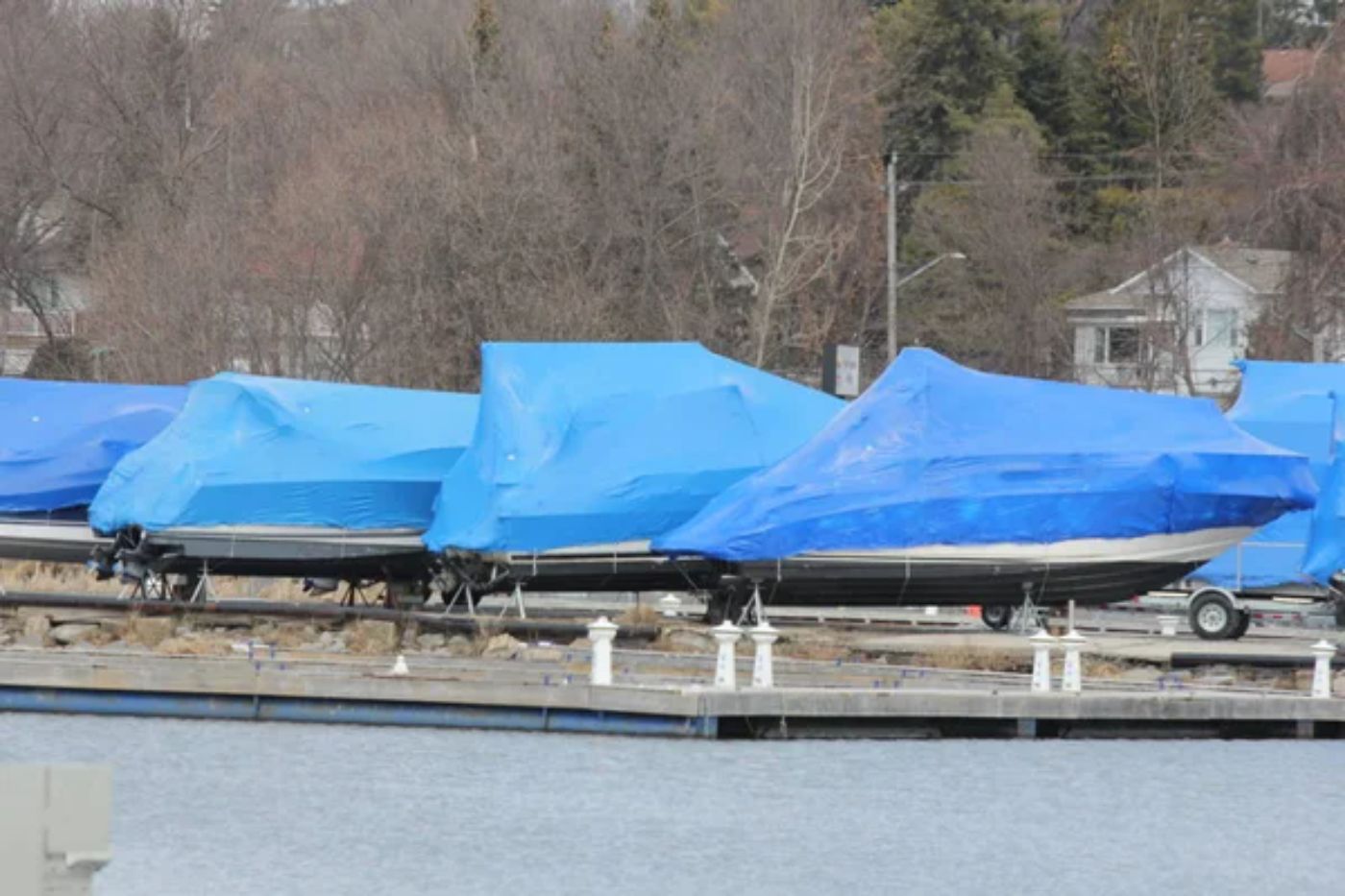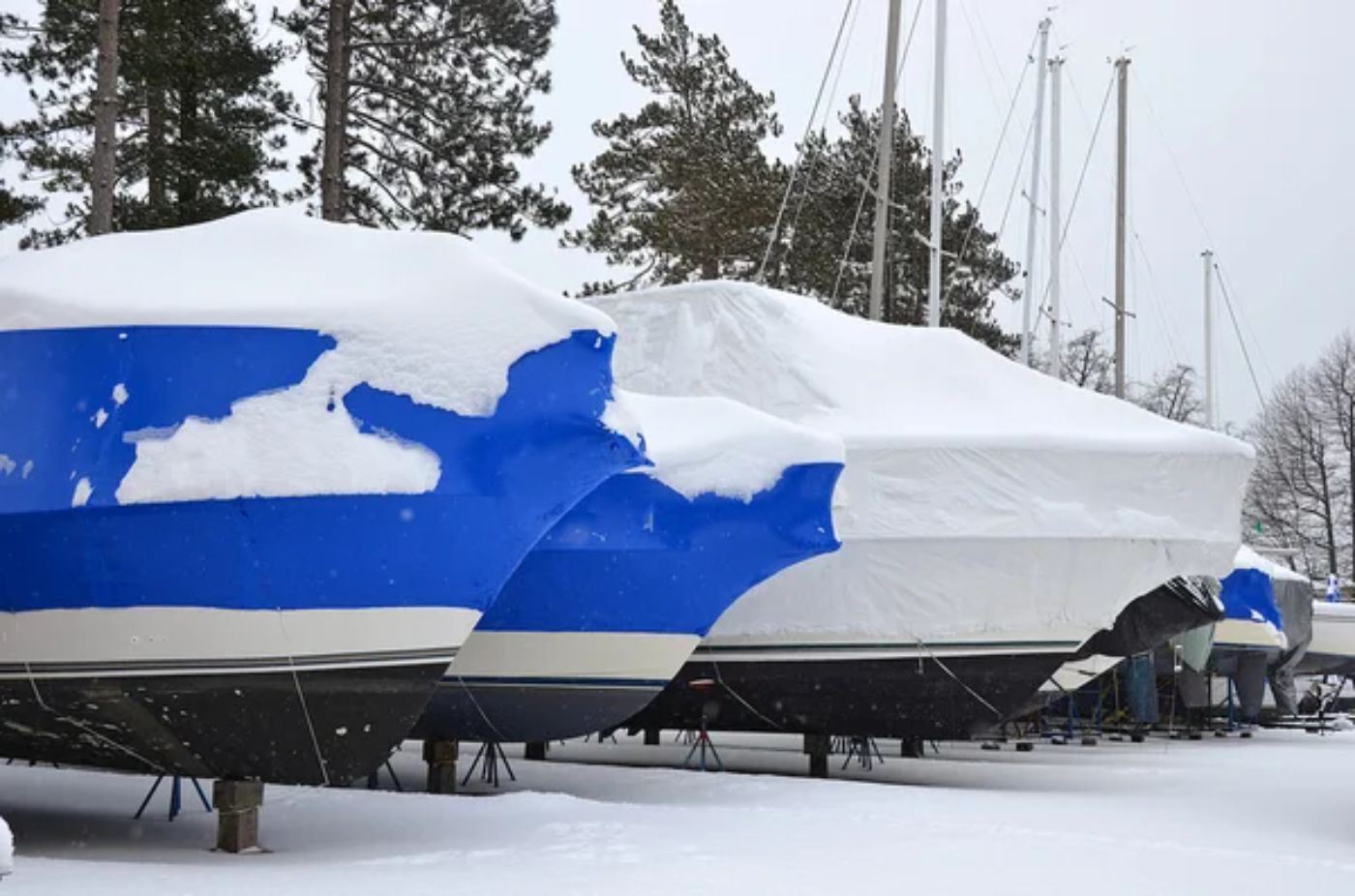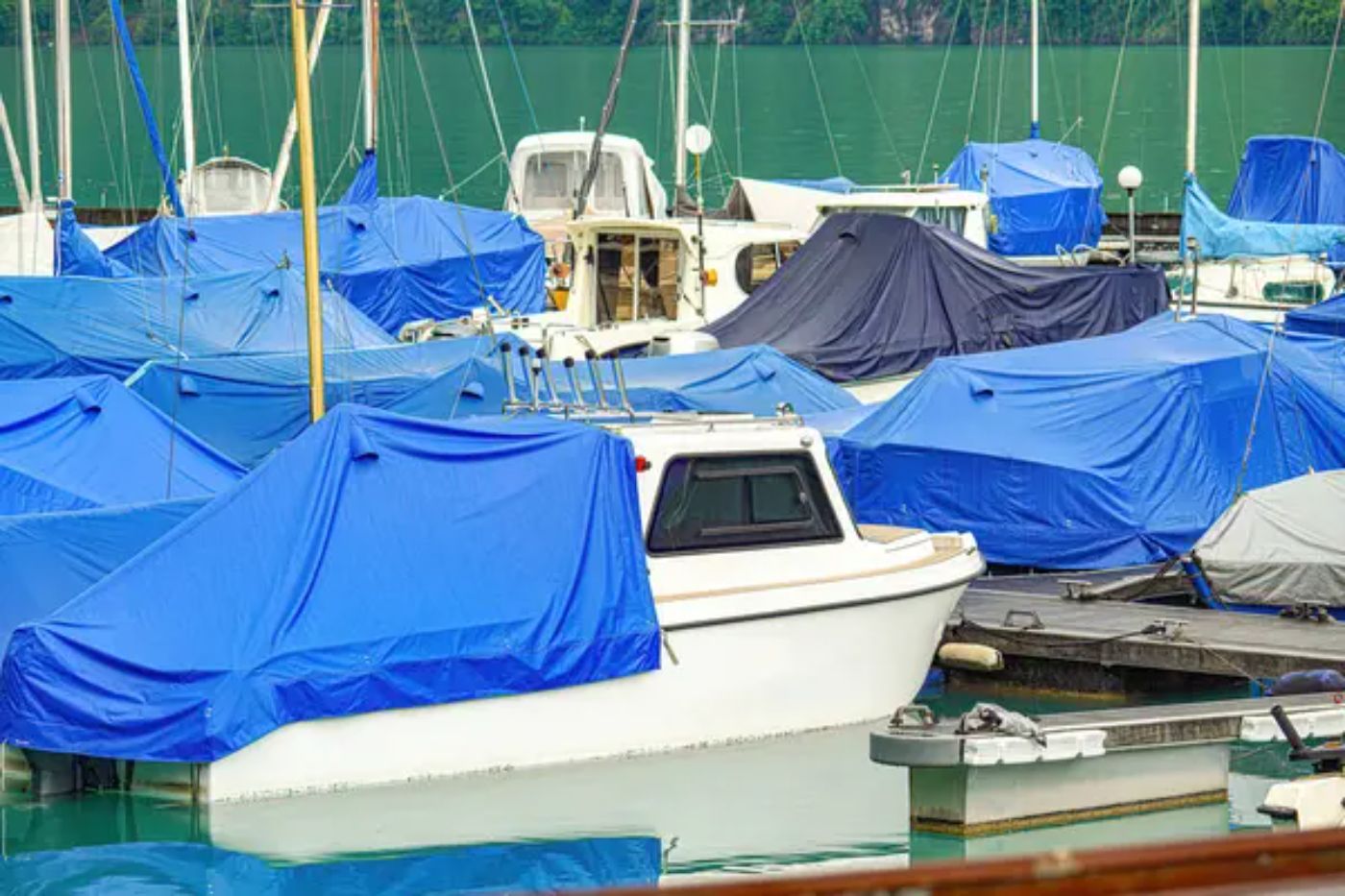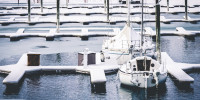How to Winterize Your Sailboat in 4-6 Hours
If you're a new sailboat owner, you may be wondering where and how to start winterizing your boat. Fortunately, with the right tools and knowledge, you can winterize it quickly and easily. In this article, we'll provide you with a step-by-step guide to winterizing your sailboat in just 4–6 hours.
Winterizing your sailboat involves several steps, but first, you have to gather all the needed supplies. Then, you can proceed with draining the water system, removing the sails and rigging, protecting the boat's engine, and lastly, inspecting and cleaning the boat's interior and exterior.
To start, some of the basic supplies you'll need include antifreeze, oil change supplies, and other necessary supplies such as a fuel stabilizer, battery charger, cleaning supplies, and a good boat cover. Once you have all of these, let's get you started in winterizing your sailboat!
Summary
- If you don't winterize your sailboat, the water inside the boat's systems can freeze and expand, causing pipes and hoses to burst, which can be a costly repair.
- Winterizing a sailboat takes at least 4–6 hours because they are larger in size and therefore has more complex systems, and they also have rigging and sails, and a mast and keel.
- Regular maintenance and inspection of the sailboat's freshwater system, heater system, engine, rigging, and electrical system ensures the boat's longevity and safety.

On this page:
Winterize Your Sailboat in 4-6 Hours
The table below shows an estimation of the total number of hours allotted per step in winterizing a sailboat:
| Steps In Winterizing A Sailboat | Estimated Time To Complete |
|---|---|
| Gather supplies needed | 30 minutes - 1 hour |
| Draining the water systems | 30 minutes - 1 hour |
| Preparing your boat's engine | 30 minutes- 1 hour |
| Removing sails and rigging | 1 - 2 hours |
| Securing the boat's interior/exterior | 1 - 2 hours |
| Handling the boat's electrical system | 30 minutes - 1 hour |
| Total estimated time | 4 - 6 hours |
If you don't winterize your sailboat, the water inside the boat's systems can freeze and expand, causing pipes and hoses to burst. This can lead to costly repairs that could have been avoided if you had taken the time to winterize your boat properly.
It takes at least 4-6 hours to winterize a sailboat, and it's because of the following reasons:
- Sailboats are larger in size compared to jet skis and small fishing boats. They have more components that need to be winterized, which takes more time.
- They have a more complex system such as a freshwater system.
- They have rigging and sails that require special care.
- They also have a mast and keel that need to be inspected and maintained.

How Long Does it Take to Winterize a Boat on Average?
Winterizing your sailboat is not a difficult process, but it does require some time and effort. Below is a series of steps to ensure that your sailboat is protected from the winter weather and ready to sail again in the spring.
Gather the Supplies Needed

Below are some of the essential supplies you will need:
Antifreeze is essential in the winterizing process
You must add antifreeze to your boat's engine, water system, and head to prevent any damage caused by freezing temperatures. You can purchase antifreeze from any marine supply store or hardware store. Make sure to get enough antifreeze to cover all the necessary areas.

Antifreeze to Winterize Your Boat: What & How Much
Acquire some oil change supplies
Winter is the perfect time to change your boat's oil. You might need to purchase oil, an oil filter, and a drain pan. Always check your boat's manual to find out which type of oil and filter are recommended.
Other necessary supplies
In addition to antifreeze and oil change supplies, here are a few other things you will need to winterize your boat properly:
- Fuel stabilizer: This will help prevent your boat's fuel from breaking down and becoming contaminated during the winter months.
- Battery charger: If you plan on leaving your boat in the water during the winter, you will need to keep your batteries charged to prevent them from dying.
- Cleaning supplies: You will need to clean your boat thoroughly before winterizing it. This includes cleaning the interior and exterior of the boat, as well as the sails and rigging.
- Cover: A good quality cover will protect your boat from the elements during the winter months.
Drain the Water Systems
Below are some steps you need to follow to drain the water systems on your sailboat:
Winterizing a boat's freshwater system
- Turn off the freshwater pump and open all faucets to drain the freshwater lines and tank.
- Use a bilge pump or hand pump to remove any remaining water from the freshwater tank.
- Add non-toxic antifreeze to the freshwater tank. The amount of antifreeze needed will depend on the size of your tank. Refer to the instructions on the antifreeze container for the correct amount.
- Turn on the freshwater pump and open each faucet one at a time until you see the pink antifreeze come out. This will ensure that all the freshwater lines are filled with antifreeze.
- Leave the antifreeze in the freshwater lines until spring. When ready to use your boat again, run fresh water through the lines until the antifreeze is flushed out.
Winterizing the heater system
If your sailboat has a hot water heater, you'll need to winterize it separately. Here's how:
- Turn off the power or fuel source to the hot water heater.
- Close the water intake valve to the hot water heater.
- Open the pressure relief valve and drain the water from the hot water heater.
- Use a hand pump to pump non-toxic antifreeze into the hot water heater until it comes out of the pressure relief valve.
- Close the pressure relief valve and turn off the pump.
- Leave the antifreeze in the hot water heater until spring. When you're ready to use your boat again, flush the hot water heater with fresh water until the antifreeze is flushed out.
Remember to also winterize other systems on your sailboat, such as fuel tanks, carburethane, gasoline, closed cooling, belts, winterizing kit, sta-bil gasoline stabilizer, holding tank, bilge, fire extinguisher, ear muffs, water intake, lower unit, grease fittings, where applicable.
Prepare Your Boat's Engine
Below are some steps you need to take to ensure that your boat's engine runs smoothly after the winter season:
Change the oil
First, change the oil in your engine. You can use Pennzoil 15W40 Marine Engine Oil or SAE 30W Engine Oil. Make sure you have the right amount of oil and the correct oil filter for your engine.
Treat the fuel system
Add a fuel stabilizer to your fuel tank to prevent the fuel from breaking down and freezing. It is recommended to use Marine Pro or a similar product. Run the engine for a few minutes to ensure the stabilizer reaches the fuel injectors.

Deal with the cooling system
For raw water-cooled engines, drain the water from the cooling system and hoses. Remove the drain plug and allow the water to drain completely. Then, flush the system with fresh water and drain again.
-
For closed-cooled engines, add antifreeze to the cooling system. Use Sierra Brand Anti-Freeze and an Anti-Freeze Tester to ensure the correct ratio of antifreeze to water.
-
For Hurth In-Line or V-Drive Transmission and Walter V-Drive Units, add Pennzoil Dexron III ATF to the transmission fluid.
Other considerations
- Don't forget to fog the engine with fogging oil, lubricate the throttle and shift linkages with lightweight oil, and spray the engine with WD40 or an Anti-Corrosion Spray.
- Finally, prepare the drive train by changing the transmission oil and adding Pipe Thread Sealant to the drain plug.
Remove the Sails and Rigging
Below are some steps to follow when removing the sails and rigging:
Take down the sails
Start by removing the mainsail and jib from the boat. Be careful not to damage them while doing so. Inspect the sails for any signs of wear and tear, such as holes or tears. If you notice any damage, make a note of it so you can repair it before the next sailing season.
Store the sails
Once you've removed the sails, store them properly. Clean them thoroughly and let them dry completely before storing them in a dry, protected place, such as a sail bag or a sail locker. Check if they are not exposed to moisture or sunlight, which can cause damage.
Remove the rigging
Disconnect the ropes and lines from the mast and boom. Store the ropes in a dry, protected place. Inspect the rigging for any signs of damage, such as fraying or rust.
Store the rigging
Once you've removed the rigging, store it properly. Clean it thoroughly and let it dry completely before storing it in a dry, protected place, such as a rigging bag or a locker.

How Often Should Standing Rigging Be Replaced? (Minimally)
Securing the Boat's Interior and Exterior
Securing the boat's interior and exterior involves protecting the hull and covering the boat. Here are some tips to help you secure your boat's interior and exterior:
Protect the hull
Here are some steps you can take to protect the hull:
- Clean the hull thoroughly to remove any dirt or debris.
- Inspect the hull for any cracks or damage. Repair any cracks before winterizing the boat.
- Apply a coat of wax to the hull to protect it from the harsh winter elements.
- Cover the hull with a boat cover to protect it from snow, ice, and debris.
Cover the boat
Covering the boat protects the interior from moisture and cold temperatures. Here are some steps you can take to cover the boat:

- Remove all cushions, sails, and other equipment from the boat.
- Clean the interior thoroughly to remove any dirt or debris.
- Inspect the boat cover for any tears or damage. Repair any tears before covering the boat.
- Cover the boat with a boat cover to protect it from moisture and cold temperatures.
To properly cover your boat, here are 7 hacks you can apply to cover your boat well for winter storage.
Handle the Boat's Electrical System
Below are some steps to take for proper maintenance of the boat's electrical system:
Check the batteries
Before winterizing, make sure that the battery is fully charged and remove it from the boat. Store it in a dry, cool place where it won't freeze. You can also use a battery tender to keep the battery charged during the winter months.
Inspect the battery cables for any signs of wear or corrosion. If you notice any damage, replace the cables before storing the battery. Clean the battery terminals with a wire brush and apply a corrosion inhibitor to prevent rust and corrosion.
Disconnect the electronics
To protect your boat's electronics during the winter, remove any electronics that can be easily disconnected, such as GPS units, radios, and fish finders. Store these items in a dry, cool place.

Next, remove the engine box cover and inspect the wiring and connections. Look for any signs of wear or damage, and replace any damaged wires or connectors. Apply dielectric grease to the ends of the plugs to protect them from moisture and corrosion.
Clean the electronics with a soft, dry cloth to remove any dirt or debris. Do not use water or cleaning products, as this can damage the electronics. Cover the electronics with a breathable cover to protect them from dust and debris.
Did you find the answer to your specific question?
👍 0 👎 0




Leave a comment